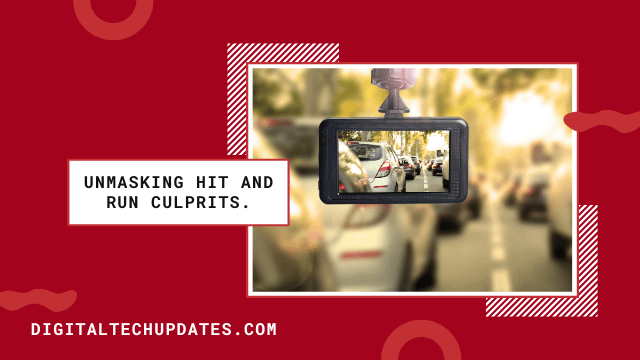Hit and run incidents leave victims with physical, emotional, and financial scars, often compounded by the frustration of not knowing who was responsible. However, the proliferation of onboard cameras, both integrated into vehicles and aftermarket options, is changing the game.
This article delves into the pivotal role of car safety tech in unmasking hit and run culprits, focusing on the increasing prevalence of dash cams and their impact on capturing vital evidence. Furthermore, it explores the legal implications of using dash cam footage as evidence in hit and run cases. It provides considerations for drivers in selecting and installing camera systems to maximize their effectiveness in aiding investigations.
Understanding Hit and Run Situations
A hit and run situation occurs when a driver is involved in a collision with another vehicle, pedestrian, or object and leaves the scene without stopping to provide assistance or exchange information. In many jurisdictions, it is a criminal offense punishable by fines, license suspension, and even imprisonment.
Hit and run incidents can range in severity from minor fender benders to serious accidents resulting in injuries or fatalities, with each state having different rules. Regardless of the circumstances, fleeing the scene of a collision without fulfilling legal obligations is considered a hit and run offense.
The Rise of Dash Cams
Dash cams have surged in popularity among drivers seeking to protect themselves and document their journeys. These compact cameras, mounted on the dashboard or windshield, continuously record footage of the road ahead and the surrounding environment. The increasing affordability and ease of installation of dash cams have contributed to their widespread adoption.
Advancements in technology have led to the development of dash cams with high-definition resolution, wide-angle lenses, and enhanced night vision capabilities, ensuring clear and detailed footage even in challenging conditions.
Capturing Crucial Details
In hit and run incidents, dash cams serve as silent witnesses, capturing crucial details that can make or break an investigation. From license plate numbers and vehicle descriptions to driver behaviors and road conditions, dash cam footage provides invaluable evidence for law enforcement agencies and insurance companies. The ability to accurately reconstruct the sequence of events leading up to the collision can significantly aid in identifying perpetrators and holding them accountable for their actions.
Legal Implications and Considerations
The use of dash cam footage as evidence in hit and run cases raises important legal considerations. While dash cam footage can be instrumental in proving liability and securing convictions, its admissibility in court may be subject to certain requirements and limitations. For example, the authenticity and integrity of the footage must be verified to ensure its reliability as evidence. Additionally, privacy concerns may arise if the footage captures individuals other than the parties involved in the incident. Drivers should familiarize themselves with the legal framework governing the use of dash cam footage in their jurisdiction and ensure compliance with relevant laws and regulations.
Maximizing Effectiveness
To maximize the effectiveness of dash cams in aiding hit and run investigations, drivers should consider several factors when selecting and installing camera systems. Firstly, opt for dash cams with high-resolution recording capabilities and wide-angle lenses to capture as much detail as possible.
Position the dash cam strategically to ensure optimal coverage of the road ahead and minimize obstructions such as windshield wipers or rearview mirrors. Regularly check and maintain the dash cam to ensure proper functioning and prevent data loss or corruption. Lastly, familiarize yourself with the operation of the dash cam and know how to retrieve and preserve footage in the event of an incident.
In conclusion, dash cams are proving to be invaluable tools in unmasking hit and run culprits and securing justice for victims. By capturing vital evidence such as license plate numbers, vehicle descriptions, and driver behaviors, dash cams provide law enforcement agencies with the critical information needed to identify perpetrators and hold them accountable for their actions. However, the use of dash cam footage as evidence in hit and run cases requires careful consideration of legal implications and adherence to relevant regulations.
By selecting and installing dash cams strategically and familiarizing themselves with the legal framework governing their use, drivers can maximize the effectiveness of these devices in aiding hit and run investigations. As dash cam technology continues to evolve, its role in promoting road safety and accountability is expected to become even more pronounced, ensuring that perpetrators of hit and run incidents can no longer evade justice undetected.




